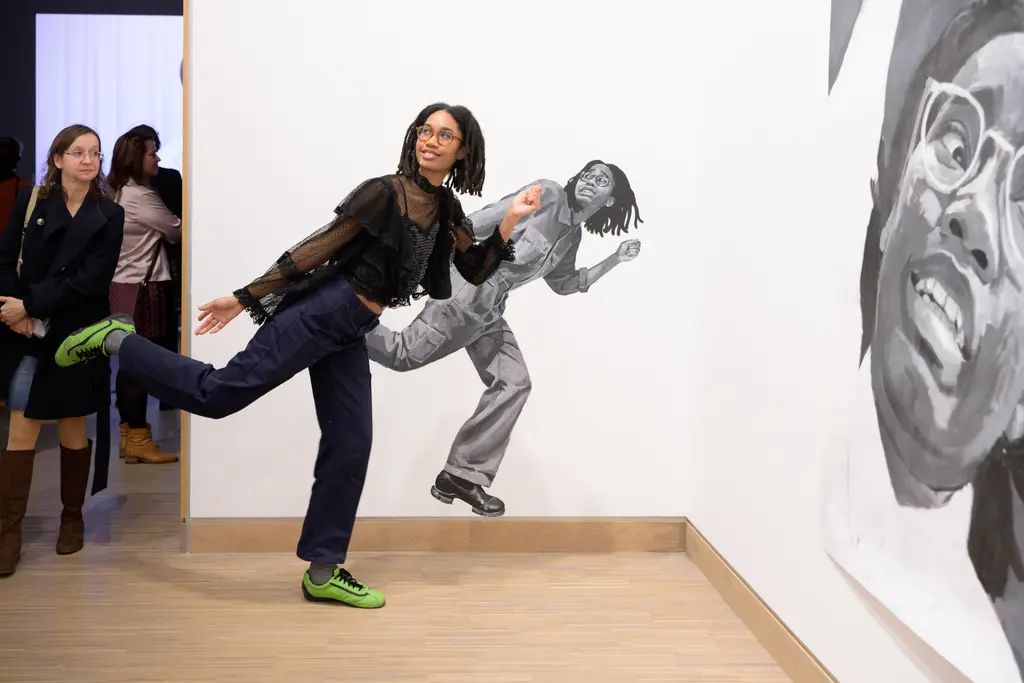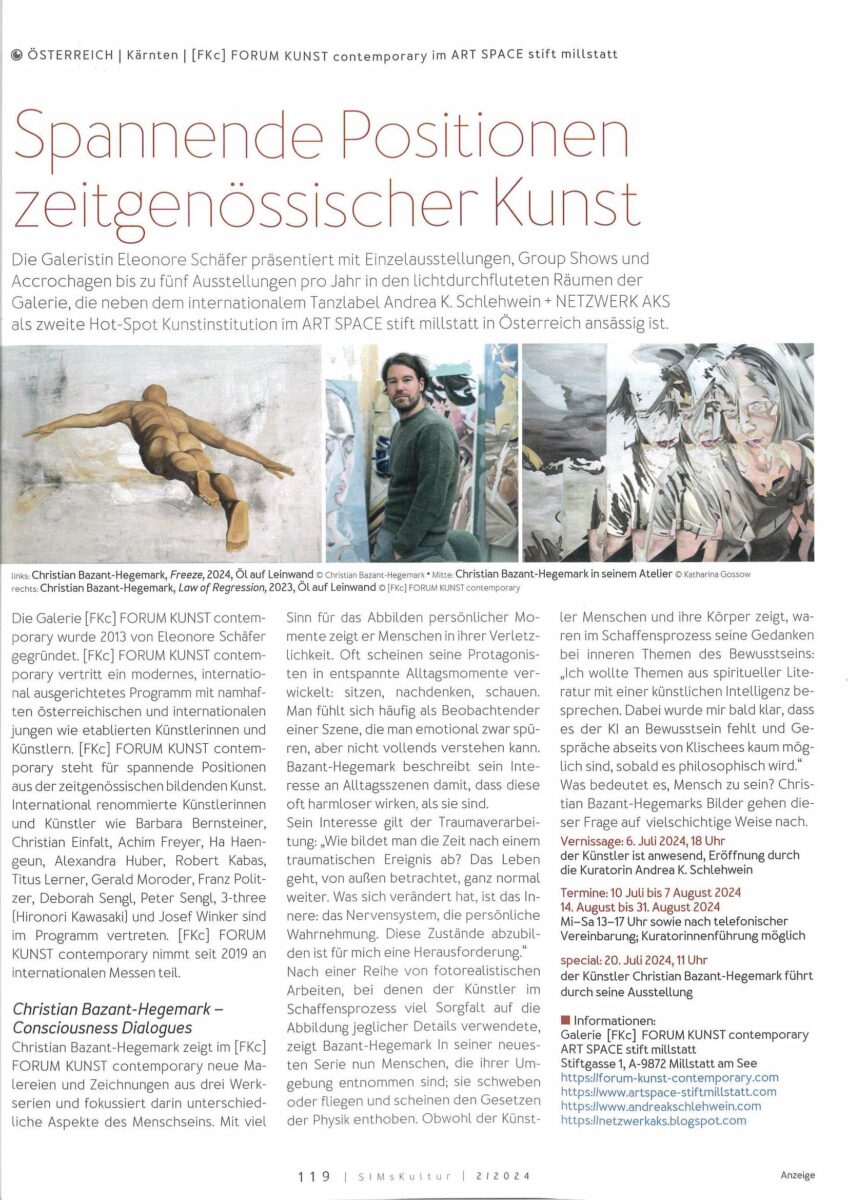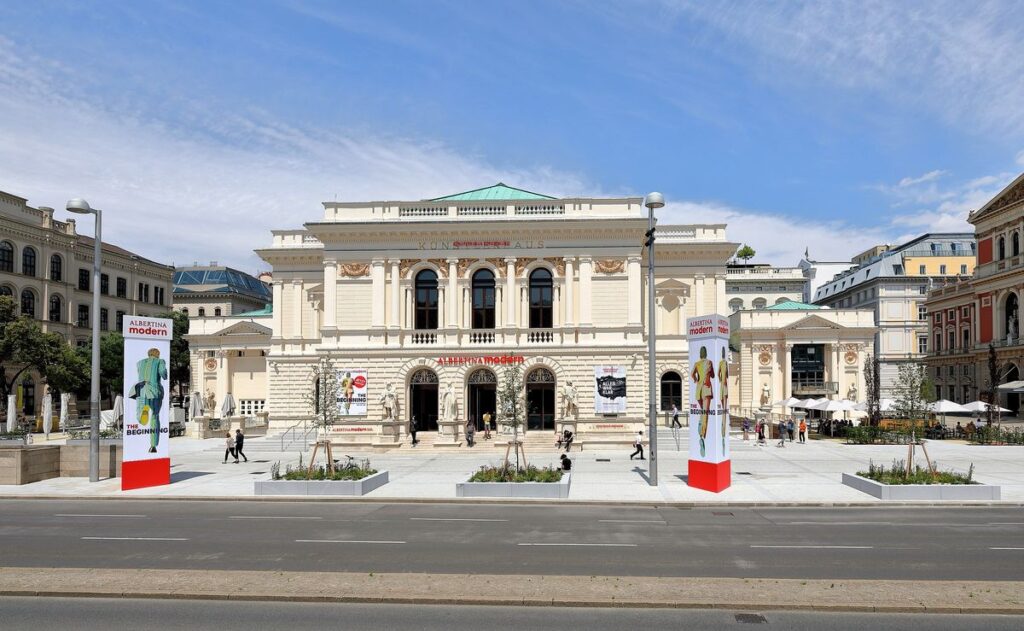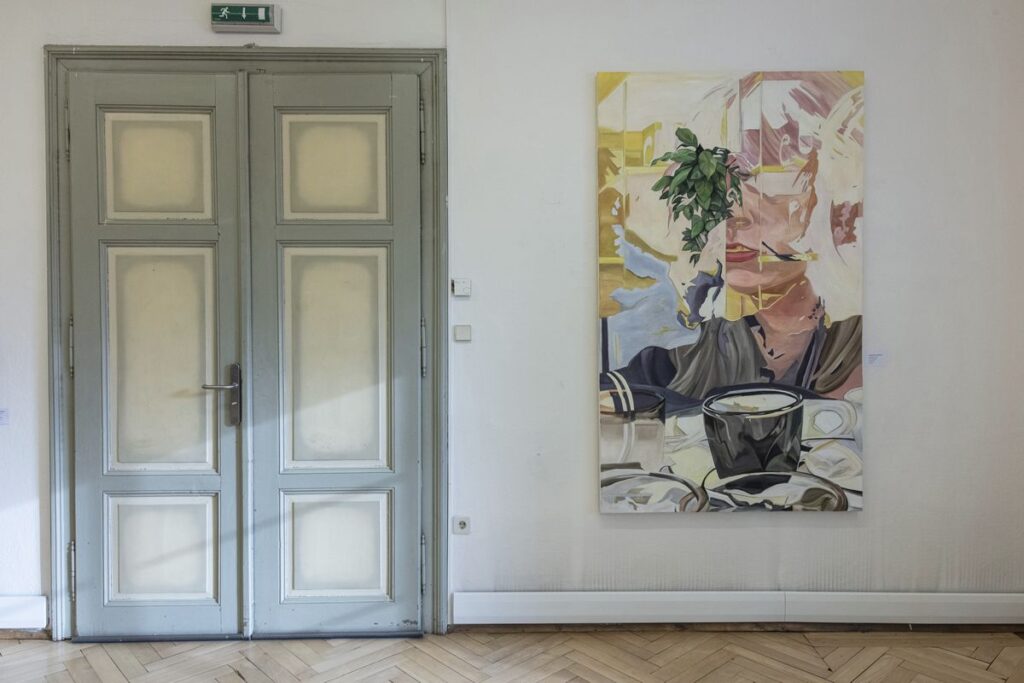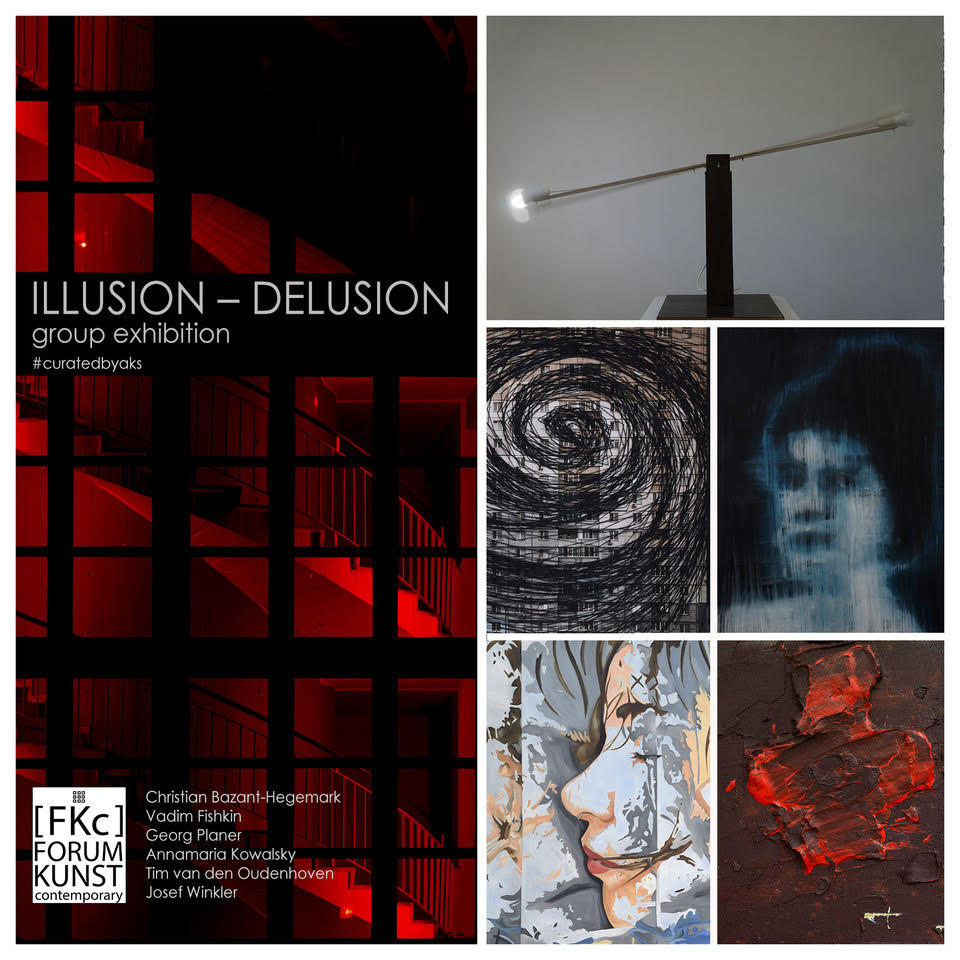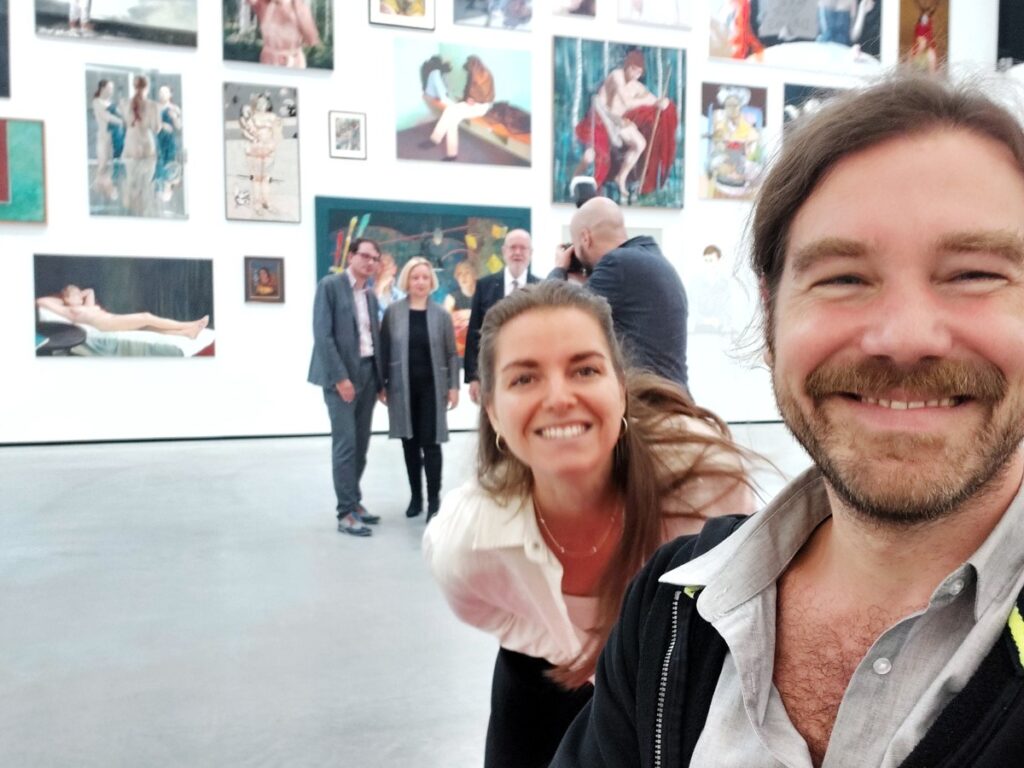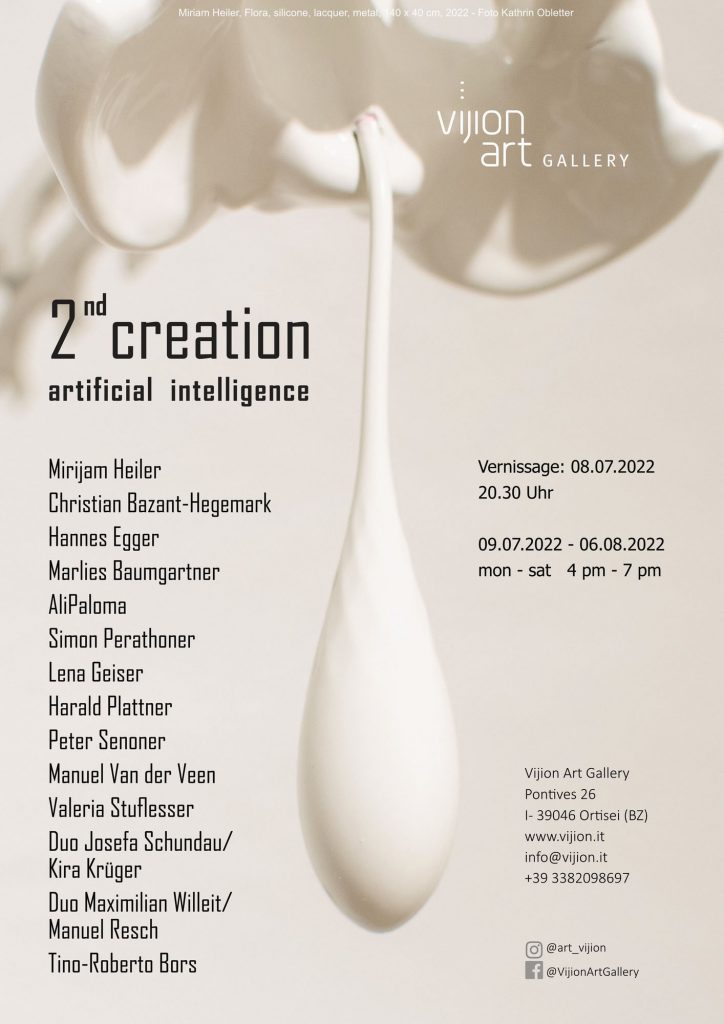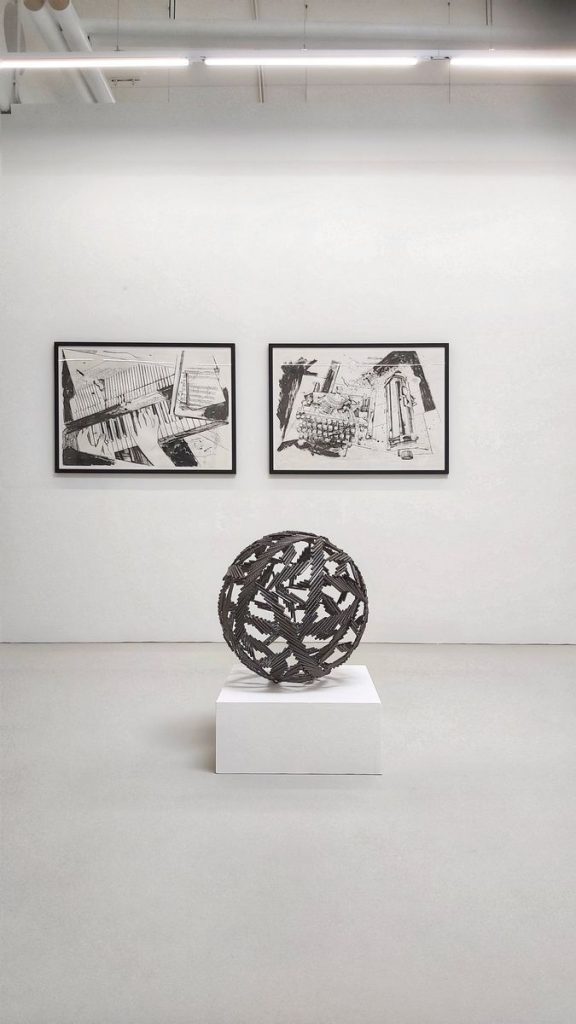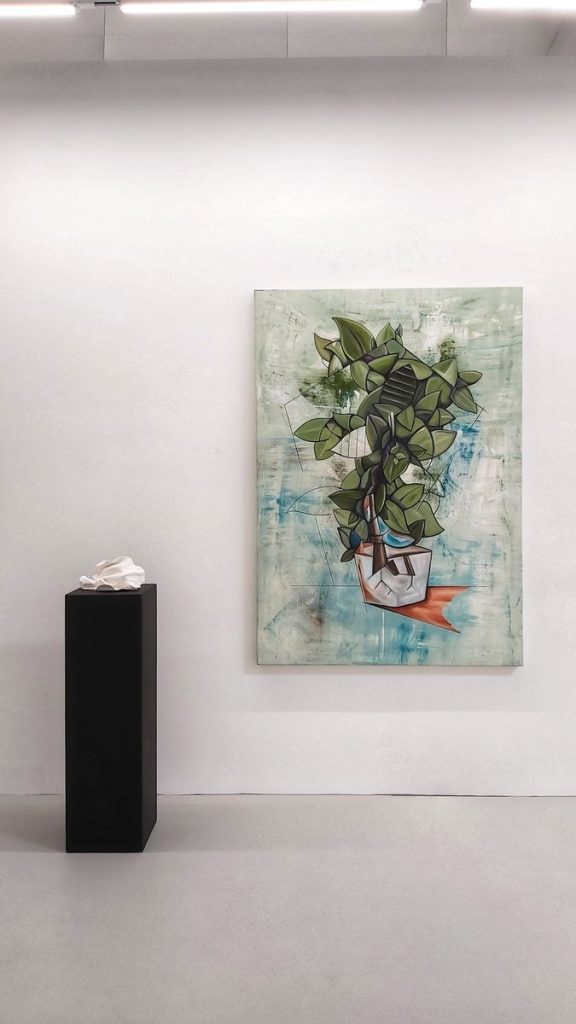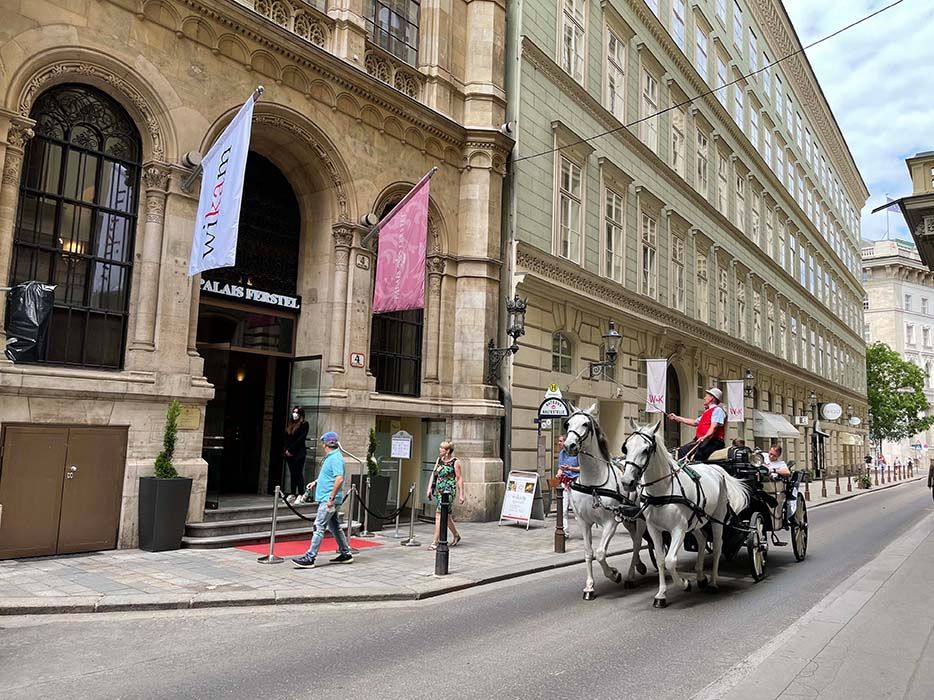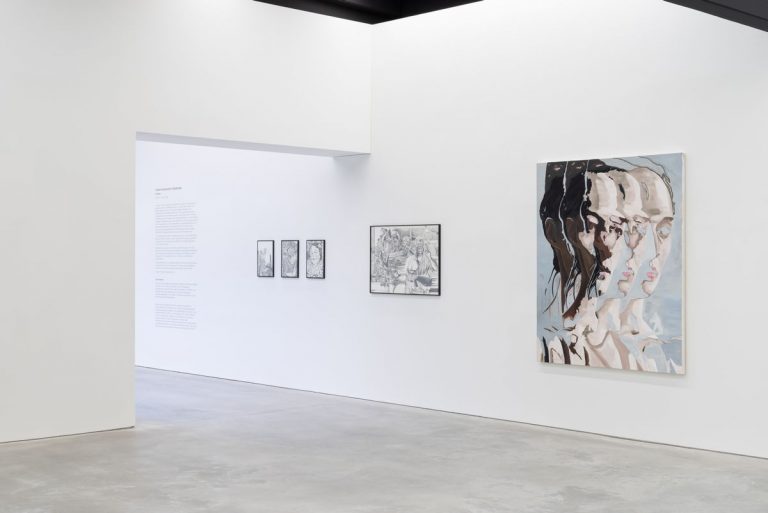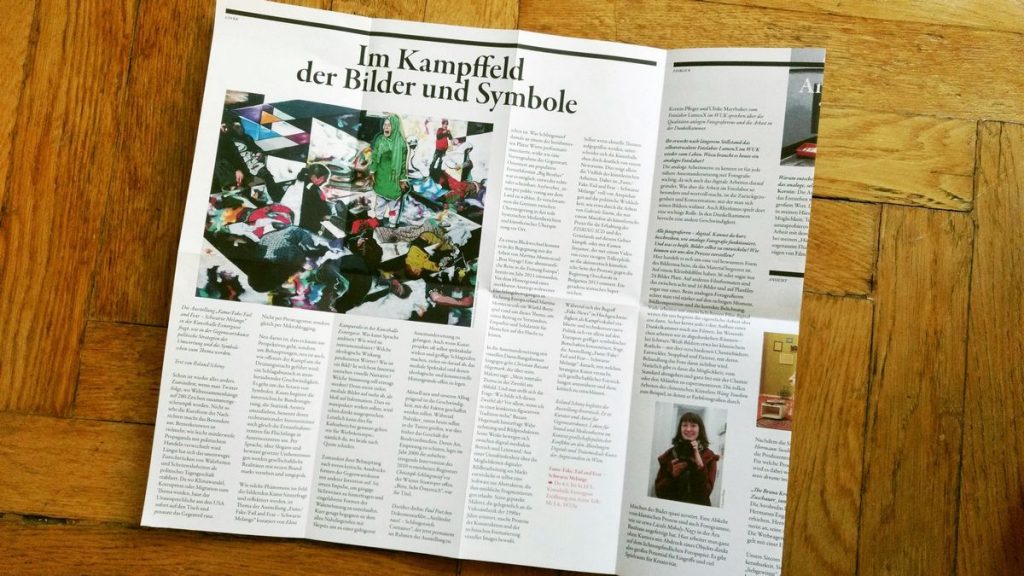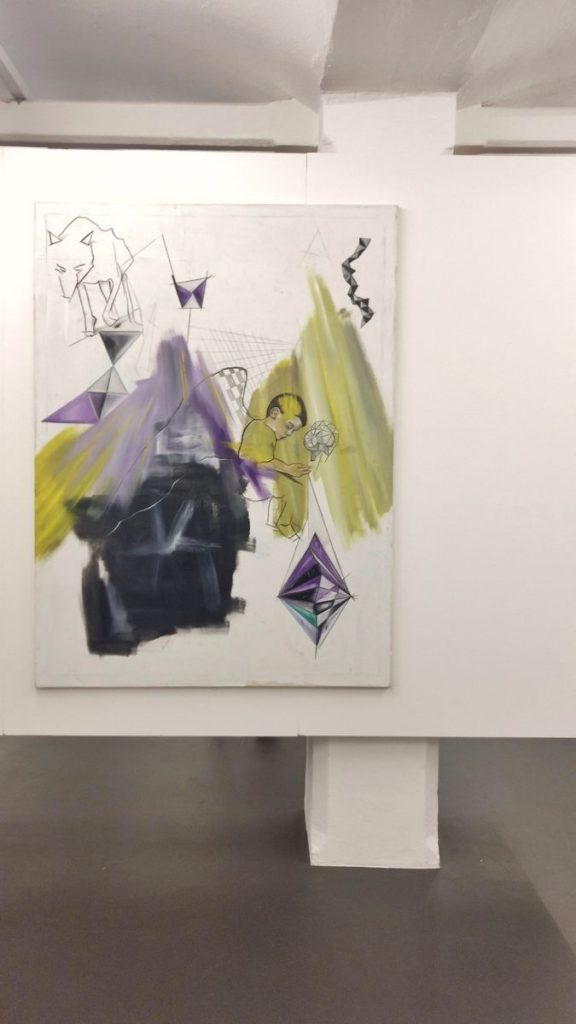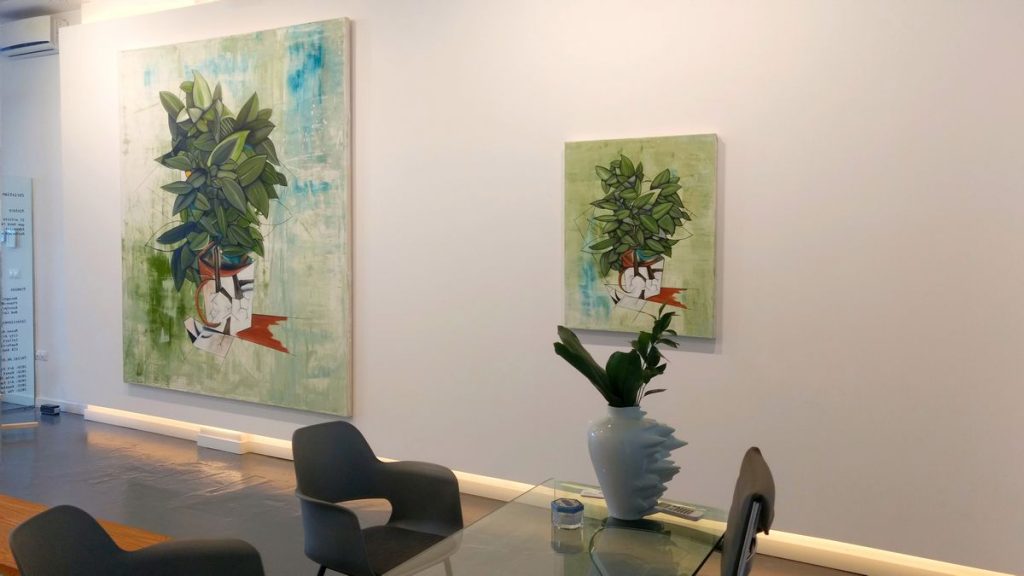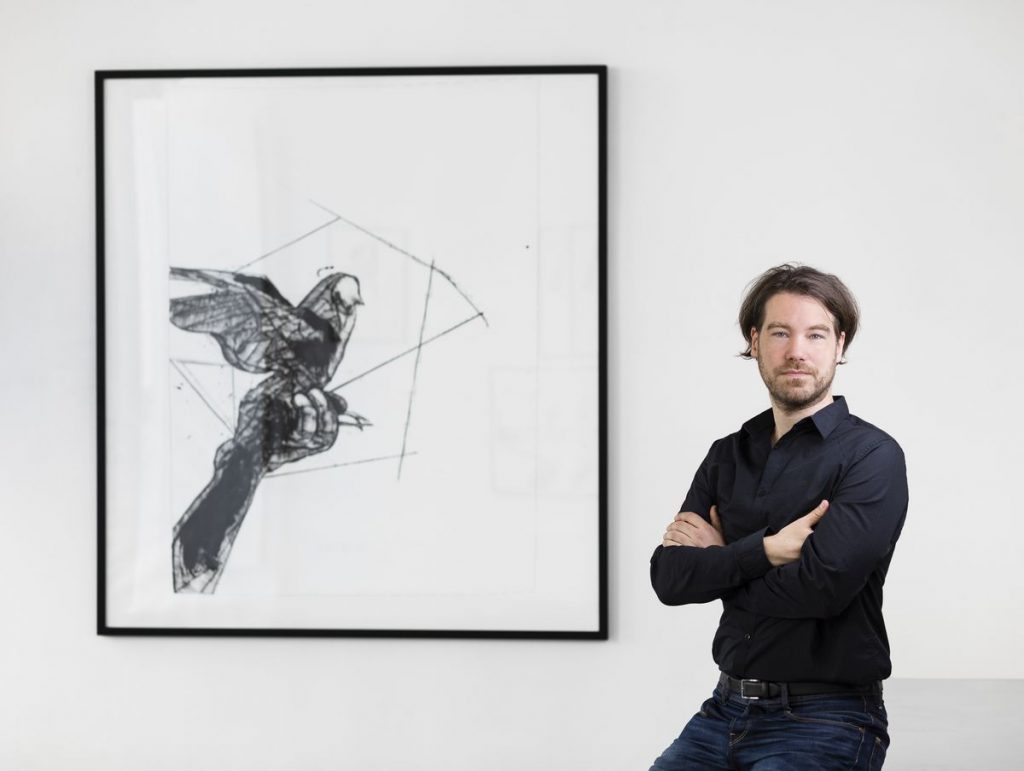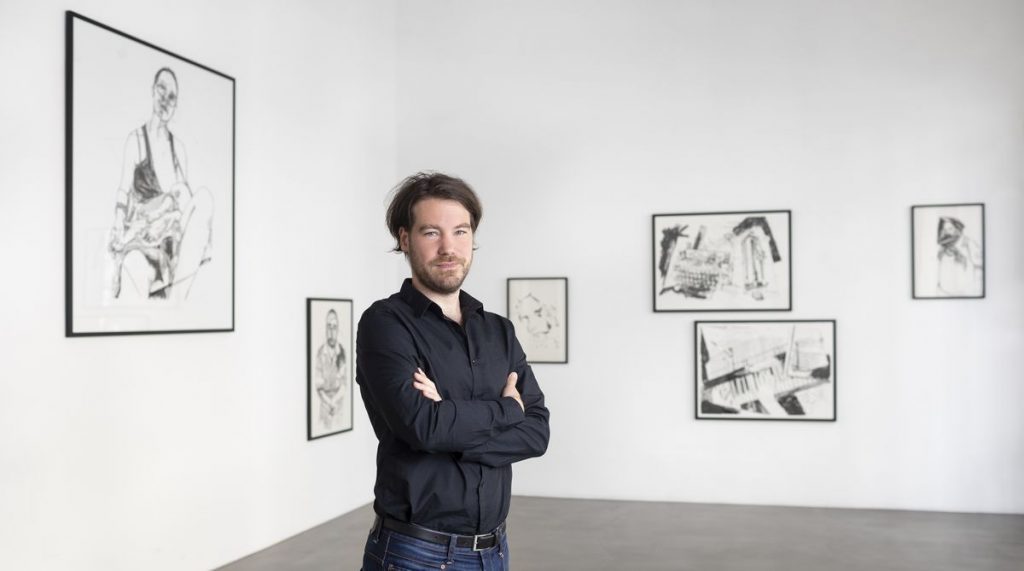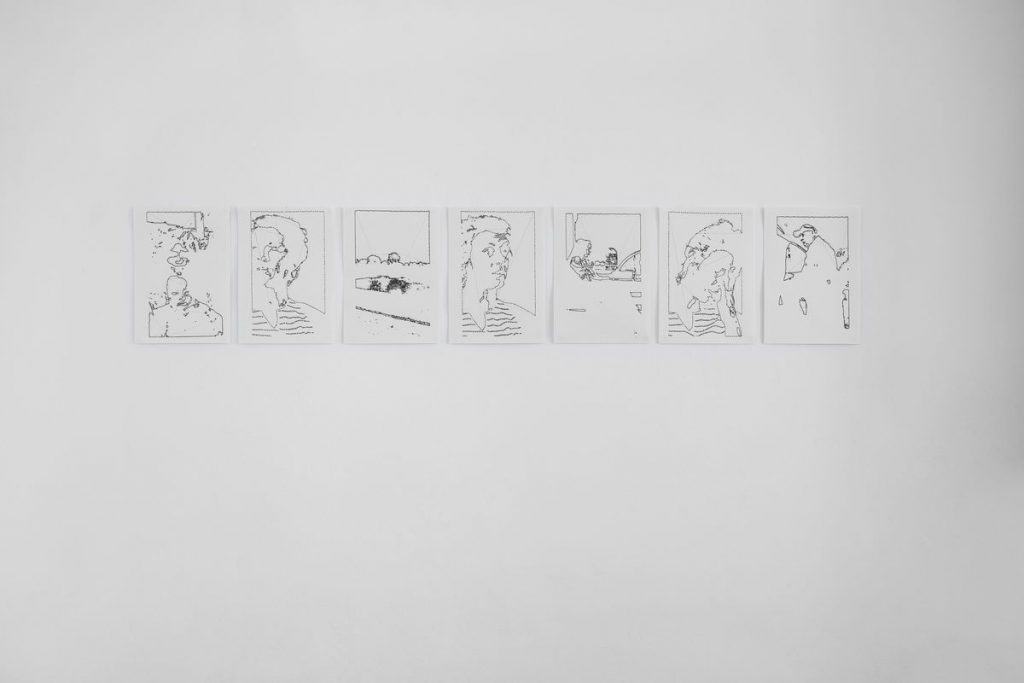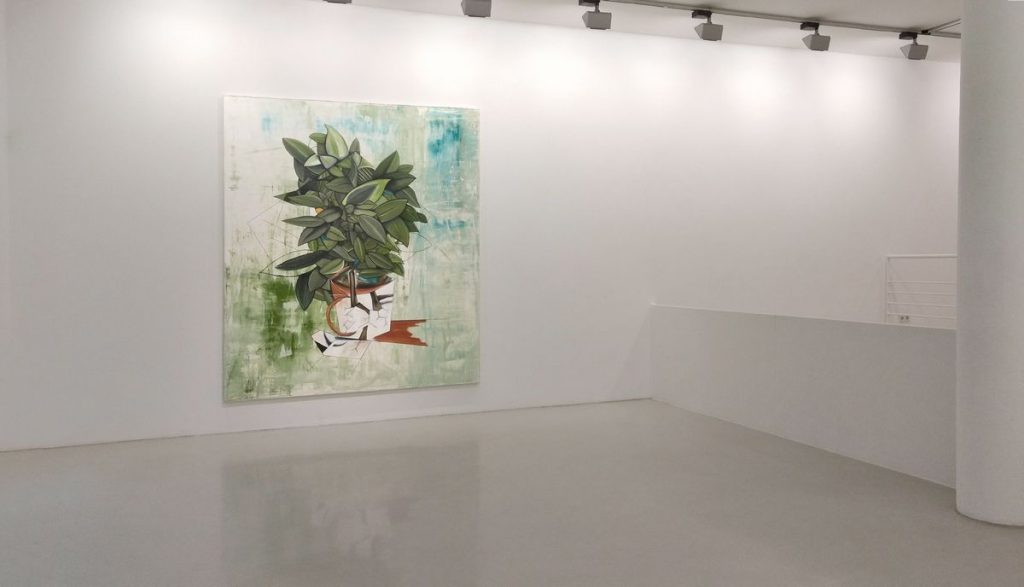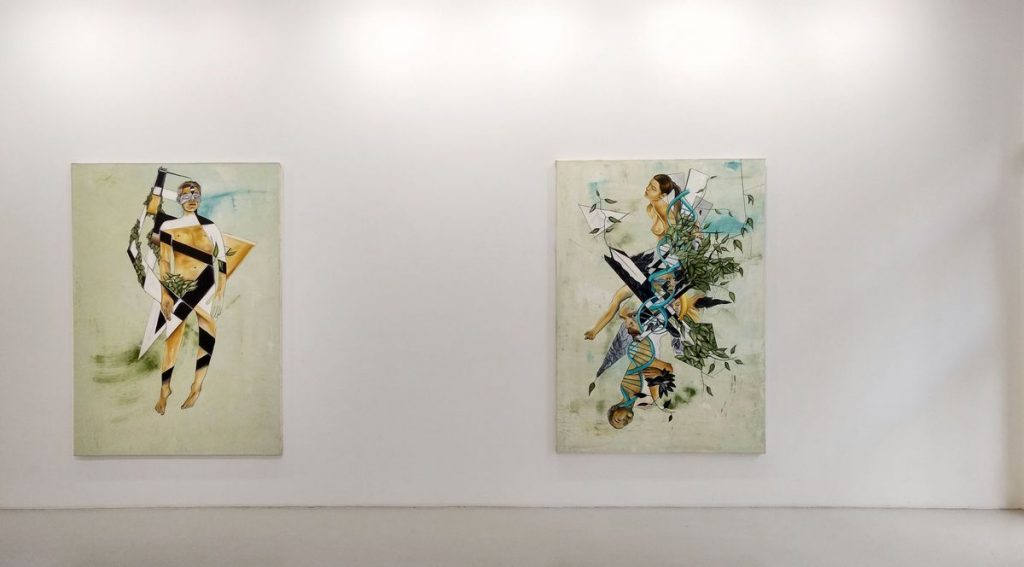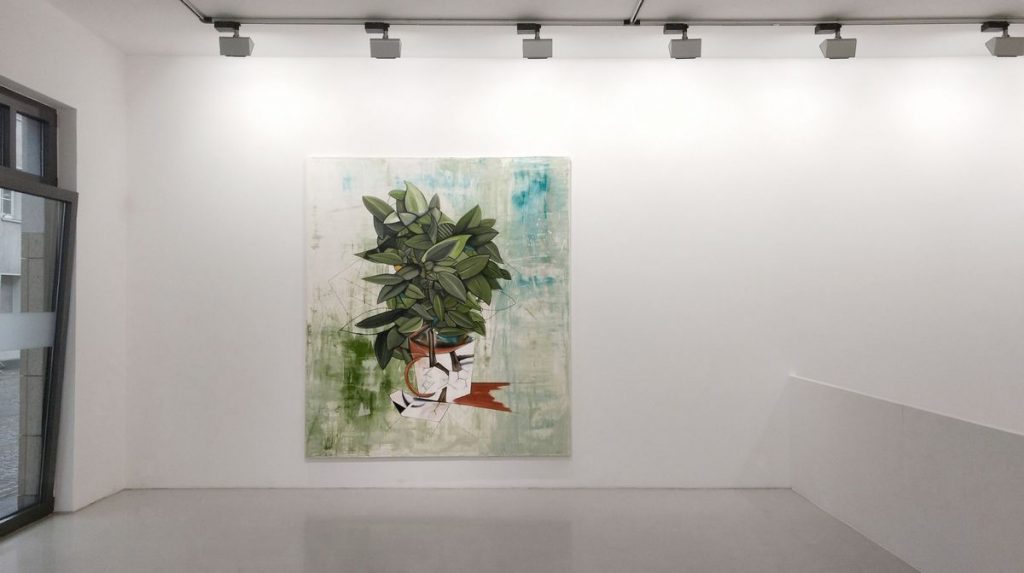My work generally blends traditional figuration with an abstraction that time and again references computer graphic stereotypes: theatrical scenes populated with interpersonal agendas, focusing a loose triple dynamic of identities, places and actions – with uncertainty being their potentially distinctive, uniting feature. To strengthen their political subtextual leanings, some pieces reference highly specific contemporary documentary photography (e.g. Uncertainty Principle depicting Lamon Reccord, or The Drizzle depicting Sergey Ponomarev’s award-winning refugee photo). The paintings care to reflect our human conditions’ ambiguities, and can be understood as fragmentary statements towards an infinite, holistic, multi-narrativistic rhizome: offering views on society and culture in general, and the layers upon layers of individual fears and hopes discoverable within.
By touching the transient nature of topics like identity, gender, memory, emotion, motivation, etc., the works focus the ever-changing undercurrents of societal contracts, as well as the vast spaces in between those clearly defined hegemonic states. Transformation, transition, transference, transgression: How does painting (for entities living within the specifics of legislature) relate to the humanistic experiences of societies based on limitations and freedoms? How do individuals operate when finding themselves in situations beyond clearly understandable dynamics of cause and effect? What consequences emerge for western minds, whose identifying agendas (studying, remembering, producing) are gradually taken over by monotheistic algorithms? The presented works are the result of a process investigating the creation of paintings; sidestepping didactics, aiming for a specific emotionality to facilitate a state defined by an equilibrium of emotion and intellect: painting as emotionally coherent space.
Ultimately, this reflects my interest in ontological, media-based inquiries regarding the state of figurative painting within postmodern canons: the state of mimetic painting strategies in general, and more specifically regarding its post-symbolist use in mapping indefinable, infinite characteristics; how a “poetics of paint” influences its mapping abilities; how painting can be made a proper tool to discuss politics and societies, when its native ability seems so much more suitable to documenting its own phenomena (drippings, flowing, splashes etc. – the physical attributes of oil paint); how abstraction is modified when the aforementioned phenomena are augmented by highly detailed figuration, or other narrative mechanics: These physical attributes make painting seem uniquely suitable to map volatile, ambiguous and indefinable characteristics.









